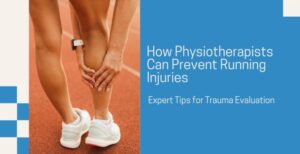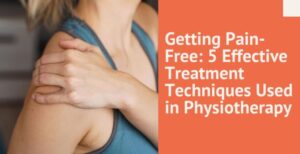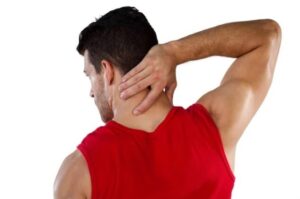
Across the glove, low back pain happens to be a major musculoskeletal issue. However, due to its unique features, specialized evaluation is needed for athletic low back pain. Just how much do you know about it? How to make your evaluation of low back pain in athletes more like an expert? Read on and find out!
Low Back Pain in Athletes
Athletes suffering from low back pain are always under pressure to return quickly and perform at their peak again. In most cases, lower back pain goes away in 6 to 12 weeks. However, many athletes can get back to their activities much faster.
It is also notable that athletes when it comes to low back pain and exercises, are possibly classified on the far side of the “U-shaped” curve.
Among people with a sedentary lifestyle, very little physical activity happens to be a risk factor. In athletes, however, spikes in activity or excessive levels of physical activity happen to be a risk factor for low back pain.
When athletes suffer from pain in the lower back region, they are typically unable to remain sedentary even while rehabilitating. They have to keep up with their fitness routine as much as they can, so as to be able to go back to training and sports safely.
These things need to be considered during an initial assessment. It can offer a proper diagnosis plan, help with initial referral decisions, and give an idea about the recovery duration. Athletes can find out how they should train during the rehab stage.
Subjective Examination
This should include:
Assessing the symptoms experienced
It can offer plenty of details to help make a proper diagnosis. On a routine basis, most physiotherapists make inquiries about neurological and pain symptoms, such as tingling and numbness in the limbs.
The shape of the region of pain should also be considered. Generally, if pain is distributed on a finger line, it can indicate radicular pain. However, somatic referred pain could be the problem if there is a broader distribution of pain as wide as the hand span.
Radiculopathy patients often exhibit both of these. Other than these, L5/S1 radicular pain or SIJ pain can be the problem if there is pain in the sacrum. Activities performed on single-leg stances usually aggravate sensations in patients suffering from SIJ pain symptoms.
Considering the sport or training history
The sports and patterns of movement of an athlete can help to determine what possibly drives the pain. For instance, disc-related pathologies are often involved with rowing, cycling, and sports activities that involve flexing repetitively.
However, facet joints and/or Pars interarticularis are typically involved in baseball, gymnastics, and other activities that involve repetitive extension motions.
Physiotherapists need to get an idea about the structures possibly involved so that they can instruct patients on how to unload the painful region, get treated quickly, and start training again with movements that do not trigger the pain.
The training history of an athlete should also be determined. It can help to get an idea about which factors during training might have caused low back pain. It is well-known that pain onset is associated with a training load spike whereas maintaining high training loads helps safeguard the region.
Evaluating Yellow and Red Flags
Considering the red and yellow flags is also essential while making a subjective assessment. Bladder/bowel changes or unrelenting nocturnal pain are some red flags that can demand referral to a physician, for more assessment.
While conducting subjective assessment, therapists can also determine psychosocial factors, pain sensitization, and other yellow flags that may hinder recovery. For instance, if low back pain is experienced in repeated bouts, it might have to be evaluated further during the Objective Examination.
Objective Examination
During such an assessment, brevity is the key. Otherwise, pain can get aggravated unnecessarily. Further assessments can be done during future sessions.
Also, when there is acute low back pain, precise information may not be obtained from specific measurements. Pain can change the ability of an athlete to move properly, such as if some muscle groups suffer upregulate.
Lumbar Range of Motion
With a standing lumbar range of motion, physiotherapists can understand how motor control has altered. It can help with proper diagnosis.
Therapists check the quality of movement first. They observe forward flexion, hip hinge, etc to check whether an athlete shifts weight behind to obtain full segmental flexion or tries to prevent flexion through the lower back. With proper motion observation and pain response of athletes, they can determine which structures are possibly involved. Disc pain is worsened by Lumbar flexion while facet joint and pars interarticularis pathologies are aggravated due to extension. Extension pain can also arise due to an annular tear or a large disc bulge.
Neurological Function Assessment
Neurological function must also be assessed. The process can begin with simple testing for reflexes, myotome, and dermatome. Myotome testing can be made more efficient with Heel and toe walking and other methods that make manual muscle testing of myotomes unnecessary.
Passive straight leg raises may also be performed to look for pain provocation and when movement resistance happens. A slump test can be performed in case the straight leg raise test reports are negative. Both range of motion and pain provocation can be evaluated.
Therapists can also use Kemp’s Sign test to evaluate how much pain arises due to spinal stenosis and facet joints.
Range of Motion of Thoracic Spine and Hip
This helps to determine whether reduced movement efficiency is due to any deficit in mobility. When there is less mobility in the lumbar spine (more appropriate for force transfer and stability), thoracic spine, and hips (more suitable for mobility), movement efficiency gets reduced during sports activities that need athletes to perform near-end range.
For instance, 115 degrees and 130 degrees of hip flexion are needed in cyclists and rowers respectively. For them, it can be better to have scope for some extra hip flexion.
Likewise, for any athlete who has to extend to a large degree, such as during gymnastics or throwing activities, hip extension is vital. It is also necessary to have thoracic rotation, particularly for those who perform repetitive extension-rotation movements, such as throwers or swimmers.
Somatosensory “Smudging”
This should be assessed if any athlete exhibits persistent pain. Somatosensory “smudging” refers to changes in cortex level in the representation of a painful area. It can have a negative impact on motor control.
2-point discrimination testing on the lower back can be an effective evaluation of such neural changes. It determines what kind of response an affected athlete shows while trying to spot numerals/letters traced onto the painful region. Then, such an objective test can be repeated to determine his or her progress with recovery.
Conclusion
With proper evaluation of athletic low back pain, proper diagnosis, initial referral decision, and recovery timeline can be easier. After an initial evaluation, physiotherapists Epping can refer out for more assessment, and start discussing plans on how a return to athletic activities will be possible and how training should be modified.






